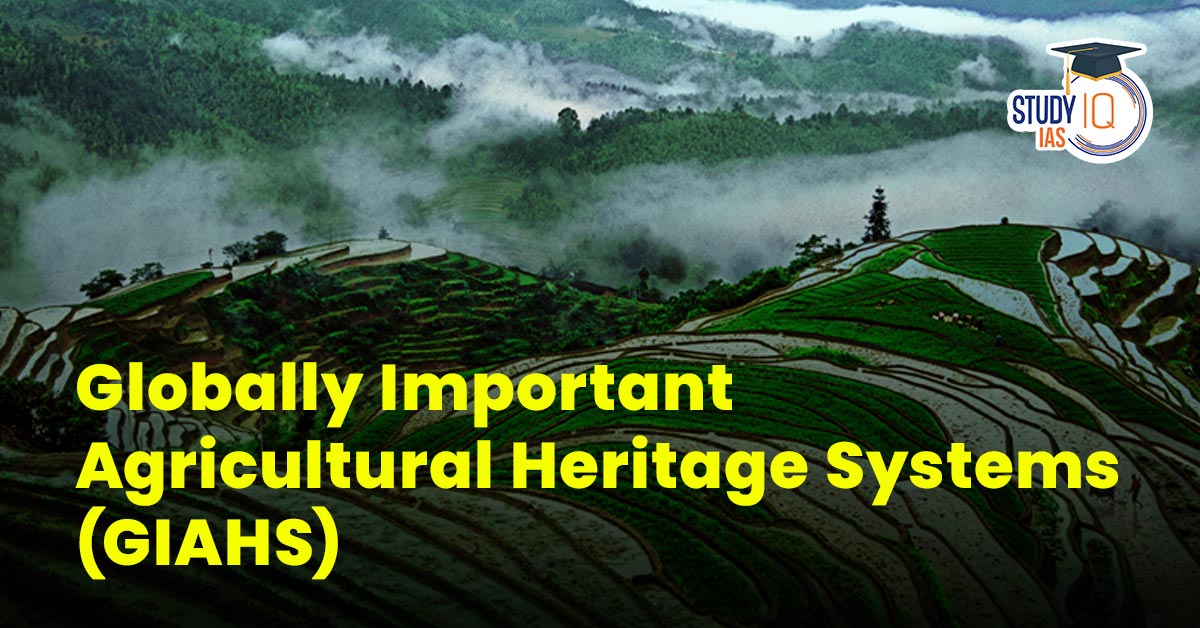Table of Contents
Context: 6 new sites join FAO’s Globally Important Agricultural Heritage Systems (GIAHS).
About Globally Important Agricultural Heritage Systems (GIAHS)
- Globally Important Agricultural Heritage Systems (GIAHS) are agroecosystems where communities maintain a deep and intricate relationship with their natural environment.
- These are dynamic and resilient agricultural systems that evolve over time.
Key Characteristics
- Remarkable Agrobiodiversity: Includes a variety of crops, livestock, and ecosystems
- All components function in ecological harmony.
- Traditional Knowledge: Encompasses long-standing agricultural practices and wisdom.
- Passed down through generations.
- Invaluable Cultures: Reflects rich cultural heritage.
- Traditions are intimately connected with the landscape and farming methods.
- Beautiful Landscapes: Features visually striking and ecologically significant landscapes.
- Shaped by sustained human-nature interaction.
| Recent Additions to GIAHS Sites |
|
GIAHS Programme
- Origin: Initiated in 2002 during the World Summit for Sustainable Development.
- Rationale: Developed as a response to rising global threats facing family farmers and traditional agricultural systems.
Objective
To safeguard traditional farming practices and family-based agriculture from:
- Climate change
- Biodiversity degradation
- Community displacement
Key Approach
- Multi-stakeholder Engagement: Brings together various actors to support farming communities.
- Technical Assistance: Provides direct support to enhance the resilience of local agricultural practices.
- Knowledge Promotion: Encourages recognition and preservation of traditional agricultural knowledge and techniques.
- Market Development: Facilitates new opportunities, like:
- Marketing of traditional farm products
- Agro-tourism
- Local economic development
| Current Status (as of latest data) |
|


 Iran Nuclear Crisis and India’s Role f...
Iran Nuclear Crisis and India’s Role f...
 H1B Visa Program, Beneficiaries, Eligibi...
H1B Visa Program, Beneficiaries, Eligibi...
 Comparison Between India & France's ...
Comparison Between India & France's ...

























